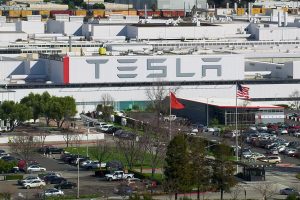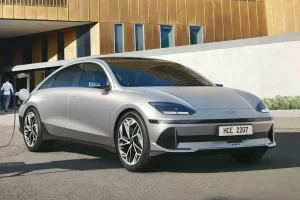- 🚗 Mazda will adopt Tesla’s North American Charging Standard (NACS) for its upcoming battery electric vehicles.
- 📅 Mazda’s EVs with Tesla’s NACS standard are expected to be launched in North America from 2025 onward.
- 🔌 The adoption of NACS aims to provide Mazda customers with a broader range of charging options.
- ⚡ Mazda’s electric vehicle strategy in the U.S. faced challenges, with the MX-30 having low sales and being taken off the market in 2023.
- 🌐 The NACS adoption will give Mazda drivers access to over 15,000 Superchargers in North America, enhancing charging network reliability.
- 🔄 Mazda CEO plans to debut seven to eight new electric cars by 2030, citing uncertainties in EV demand as a reason for a conservative rollout.
- 🤝 Access to Tesla’s Supercharger Network is expected to make Mazda electric cars, like the MX-30, more viable for consumers.
The automotive industry is undergoing a significant transformation with the rise of electric vehicles (EVs), and Mazda is making a bold move to stay ahead of the curve. In a recent announcement, the Japanese carmaker revealed its plan to adopt Tesla’s North American Charging Standard (NACS) for its upcoming battery electric vehicles. Let’s delve into the details of this strategic decision and its potential impact on Mazda’s electric vehicle journey.
Mazda’s Leap into the Future
- Adoption of NACS for Future EVs 🚗 Mazda’s commitment to embracing Tesla’s NACS sets the stage for a new era in electric mobility. This move goes beyond just technological integration; it signifies a collaborative approach towards creating a standardized charging infrastructure.
- Launch Timeline: 2025 Onward 📅 Enthusiasts and eco-conscious consumers can mark their calendars, as Mazda’s EVs equipped with Tesla’s NACS standard are expected to hit the North American market from 2025 onward. This timeline aligns with the increasing demand for sustainable transportation solutions.
NACS Adoption: A Game-Changer for Mazda
- Broader Charging Options for Customers 🔌 One of the primary objectives behind Mazda’s adoption of NACS is to provide its customers with a broader range of charging options. This strategic move aims to enhance the overall EV ownership experience, addressing the common concern of charging accessibility.
- Access to 15,000+ Superchargers ⚡ The adoption of Tesla’s NACS standard opens the doors to an extensive network of over 15,000 Superchargers in North America. This not only increases the convenience for Mazda EV drivers but also contributes to the reliability of the charging network.
Learning from Past Challenges
- Challenges Faced by MX-30 in the U.S. Market 🌐 Mazda’s foray into the U.S. electric vehicle market faced hurdles, especially with the MX-30. Low sales and market challenges led to the decision to withdraw the all-electric crossover from the U.S. market after the 2023 model year.
- Strategic Shift in Electric Vehicle Rollout 🔄 Mazda’s CEO, Masahiro Moro, acknowledged the uncertainties in EV demand and outlined a strategic shift. Describing Mazda as an “intentional follower” in the EV space, Moro emphasized a conservative approach to the ramp-up, planning to debut seven to eight new electric cars by 2030.
The Power of Partnership: Tesla’s Supercharger Network
- Enhancing Viability with Supercharger Access 🤝 Access to Tesla’s Supercharger Network is a game-changer for Mazda. Even models like the MX-30, which faced challenges in the market, can become more viable for consumers with the support of Tesla’s well-established charging infrastructure.
Conclusion: A Bright Electric Future for Mazda
In conclusion, Mazda’s adoption of Tesla’s NACS standard marks a pivotal moment in its electric vehicle journey. This strategic move not only addresses past challenges but also positions Mazda as a key player in the evolving landscape of electric mobility. As we look toward 2025 and beyond, the collaboration between Mazda and Tesla highlights the importance of industry-wide cooperation for a sustainable and electrifying future.





